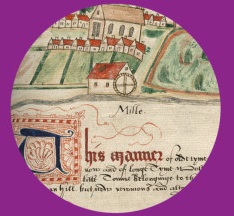Through our manorial research we often come across references to serfdom, the ancient custom where people were owned by the lord of the manor. Though a complicated picture unfree people at this time largely fell into two types – villeins or bondsmen, who were unfree tenants that had some rights of inheritance over their home and land, and serfs, who were personally unfree. Some had far fewer rights and freedoms than others, and these are often hard to define as manorial structure differed from manor to manor.
After the Black Death the remaining workforce was in demand, and both groups were able to acquire better rights. This meant that in most places these sorts of ties to the land and the lord died out. However serfs could still be found in the 14th and 15th century in Woodhorn, Seaton, Hurst, Newbiggin and the barony of Mitford. These people formed the backbone of the manorial system, but leave very little trace in the historical record. However in the course of our research for our Manor Authority files (see this previous blog for how this is done) we sometimes find their names given, a fantastic insight into ordinary people’s lives in the medieval period. We will be looking at examples we have come across that help explain the lives of unfree serfs and bondsmen in Northumberland’s manors, and show what services to the lord of the manor were expected of them.

Some serfs were made and some were born. Roger Maudut claimed Ralph le Lorimer as his ‘nief’. This is a term for a type of serf, from old French, and is often

